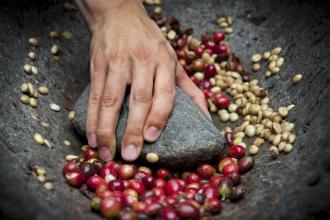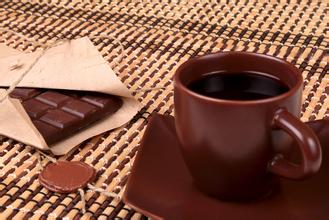Refreshing and refreshing Yemeni coffee flavor, characteristics, taste and manor
Yemeni coffee originated from Arabian coffee trees hundreds of years ago, all of which are produced in areas above 3000 feet above sea level. For hundreds of years, the unique planting and production methods of Yemeni coffee have remained almost unchanged. The seedlings of Yemeni coffee trees are first cultivated in nurseries and then transplanted to high elevations. Pesticides and fertilizers are not used in the breeding process. Mature coffee beans are naturally air-dried on coffee trees, shelled with stone grinders and then washed by repeated manual grain selection. The shape of the coffee beans is regular, the size is uniform, the color can range from light green to yellowish brown, and the aroma is rich and long-lasting. The high-quality coffee, whether drunk alone or mixed, is meaningful, refreshing and has an endless aftertaste. There are many varieties of Yemeni coffee, most of which are named after their origin and type, with different flavors, such as fresh wood, tobacco, musk, fruit wine, roasted nuts, cocoa and warm seasonings, especially Moha coffee. At present, the most famous Yemeni Moha coffee on the market are Isemary, Matari, Sanani and other varieties. Sanani coffee has medium-sized beans and fruit wine flavor, produced from Sana'an and surrounding areas. Matari coffee originates from and around Mattar in the west of Sana 'a. it is the best-known moha coffee with unique flavor. Coffee beans have chocolate color, complete grain shape, fruit wine and seasoning flavor. Isimarie coffee is the rarest variety of Moha coffee, produced in the highest altitude of Yemen, the output is very limited, the price is expensive, but there are fruit wine, spices, nuts, malt and other flavors, the quality is higher than the Matari and Sanani coffee, is the best coffee in the world. In addition, Xilazi and Zamarni are also famous coffee brands, which are produced in the high mountains along the Sana'a-Hodeida highway and in the Zamar region.

Important Notice :
前街咖啡 FrontStreet Coffee has moved to new addredd:
FrontStreet Coffee Address: 315,Donghua East Road,GuangZhou
Tel:020 38364473
- Prev

Balinese Coffee Flavor
In 1862, in the resplendent Palace of Versailles, the Sun King Louis XIV sat dangerously, the priceless, legendary 67-carat blue diamond of hope on the crown, dazzling, and the aristocratic ministers present at the court were dressed in gold and silver. They are waiting for Ambassador Suleiman Ali Suleiman Ali from the distant and magical ancient countries of the East. The mission of Ambassador Ali's visit is to adopt
- Next

Characteristics of Latin American coffee beans Latin American coffee flavor
Latin America (Latin America) in 1721 French naval officer de Klee (Gabriel Mathieu de Clieu) experienced difficulties and obstacles to bring the first coffee sapling from Africa to the Latin American island of Martinique, which was the origin of coffee cultivation in Latin America. Because at that time, France was under the reign of the Bourbon dynasty, and what was grown in Latin America
Related
- Detailed explanation of Jadeite planting Land in Panamanian Jadeite Manor introduction to the grading system of Jadeite competitive bidding, Red bid, Green bid and Rose Summer
- Story of Coffee planting in Brenka region of Costa Rica Stonehenge Manor anaerobic heavy honey treatment of flavor mouth
- What's on the barrel of Blue Mountain Coffee beans?
- Can American coffee also pull flowers? How to use hot American style to pull out a good-looking pattern?
- Can you make a cold extract with coffee beans? What is the right proportion for cold-extracted coffee formula?
- Indonesian PWN Gold Mandrine Coffee Origin Features Flavor How to Chong? Mandolin coffee is American.
- A brief introduction to the flavor characteristics of Brazilian yellow bourbon coffee beans
- What is the effect of different water quality on the flavor of cold-extracted coffee? What kind of water is best for brewing coffee?
- Why do you think of Rose Summer whenever you mention Panamanian coffee?
- Introduction to the characteristics of authentic blue mountain coffee bean producing areas? What is the CIB Coffee Authority in Jamaica?

